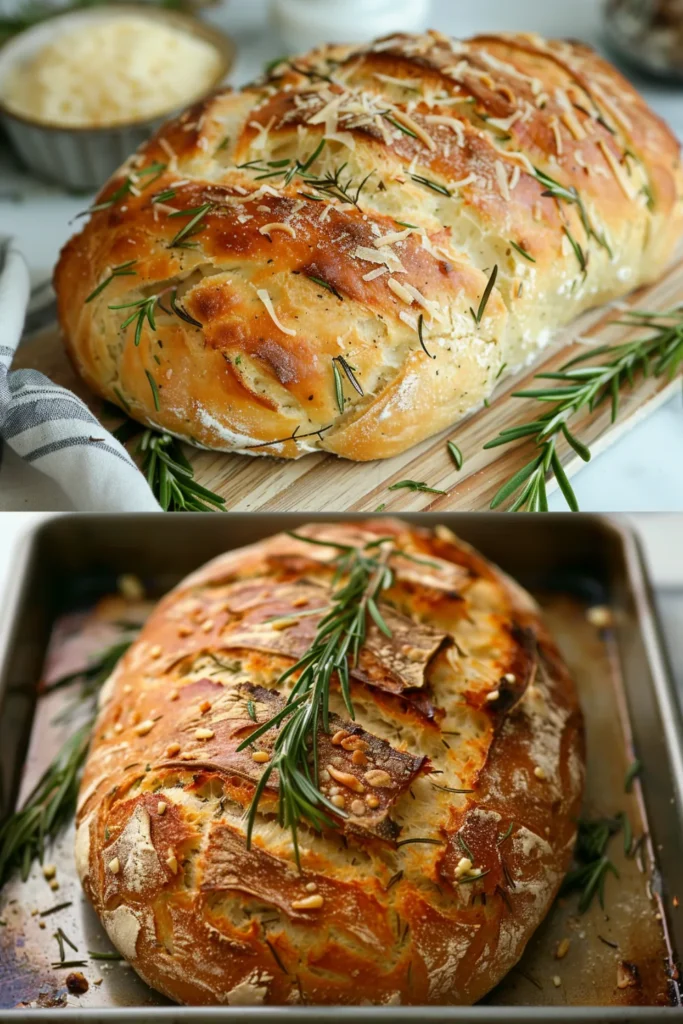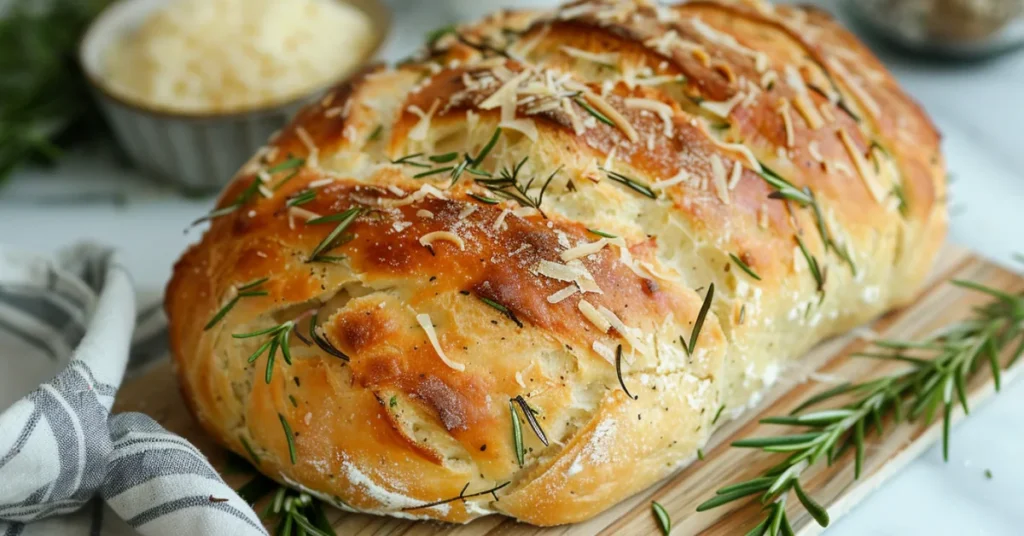Table of Contents
Engaging the World of Batard Bread: A Baker’s Guide to Mastery and Delight
Discover the art of baking batard bread, from its rich history to step-by-step guides on making your perfect loaf. Dive into this comprehensive guide to become a batard bread baking expert.
Introduction to Batard Bread
Batard bread, a delightful blend of tradition and simplicity, stands as a testament to the art of baking. With its crusty exterior and soft, airy interior, batard bread occupies a special place in the hearts of bread lovers around the world. This introduction explores its origins, highlighting the craftsmanship that goes into creating each loaf.
The History of Batard Bread
The journey of bâtard bread from French bakeries to global tables represents a captivating chapter in the story of culinary evolution. Initially, this section delves into its historical significance, tracing the milestones that have underscored its growth over the years. As we explore, we uncover how the bâtard has transitioned from a local delight to an internationally recognized artisanal bread, celebrated for its versatility and rich texture.

Origins
Pinpointing the exact origins of bâtard bread proves challenging, given that the evolution of bread shapes and sizes in France has been shaped by a myriad of factors over the centuries. These include regional preferences, economic conditions, and even specific laws. Each of these elements has played a pivotal role in molding the bread’s development, contributing to the diverse bakery landscape we see today. The baguette, for instance, has a clear and storied history that places its popularization in the early 20th century, partly due to laws regulating the working hours of bakers. The bâtard, by contrast, doesn’t have a singular moment of creation but rather evolved as a practical and desired shape among the variety of French breads.
The Name (Batard Bread)
The naming of the batard is indicative of its nature as an intermediary form. In a sense, it was neither here nor there – not as thin and crispy as a baguette, which is prized for its crust-to-crumb ratio, but not as large and hearty as a boule or a pain de campagne. The term “batard” suggests a lineage that is mixed or not pure, reflecting the bread’s status as a hybrid in terms of size and shape.
More recipes: Ramen Noodle Lasagna Recipe
Cultural Significance
Despite its somewhat derogatory name, the batard holds a place of affection in French culinary tradition. Its size makes it versatile for a variety of uses, from sandwiches to table bread, and its crust-to-crumb ratio is pleasing for many palates, offering a balance between the hard crust and the soft, airy interior.
Artisanal Resurgence
In recent years, there has been a noticeable resurgence of interest in artisanal breads worldwide, with bakers exploring traditional techniques and heirloom grain varieties. Consequently, the bâtard, with its practical size and satisfying texture, has benefitted greatly from this renaissance. Artisan bakers have warmly embraced the bâtard as a canvas for experimentation, enthusiastically incorporating whole grains, seeds, nuts, and other flavors into their loaves, further enriching the bread’s already delightful taste and texture.
Ingredients and Tools for Batard Bread
Mastering the art of batard bread starts with understanding its basic components. Here, readers will learn about the essential ingredients and the tools needed to bake the perfect loaf.
Here’s what you’ll need to get started:
Ingredients: (Batard Bread)
- Flour: High-quality bread flour is preferred due to its higher protein content, which helps develop the strong gluten network necessary for the bread’s structure and chew. Some recipes might include a portion of whole wheat or rye flour for added flavor and texture.
- Water: The hydration level of the dough is crucial for the final texture of the bread. Lukewarm water is typically used to encourage yeast activity.
- Yeast: Active dry yeast or instant yeast are the most common. Some artisanal recipes might call for a sourdough starter (levain) as the leavening agent for added depth of flavor and better keeping qualities.
- Salt: Enhances flavor and regulates yeast activity, contributing to the bread’s structure.
Tools:
- Mixing Bowl: For combining and initially mixing the dough ingredients.
- Dough Scraper: A versatile tool for cutting the dough, scraping the bowl, and handling the dough with ease.
- Proofing Basket (Banneton): batard are often proofed in a cloth-lined basket that gives them support and shape during their final rise. These baskets can be oval or long to match the desired shape of the batard.
- Lame or Sharp Knife: Used to score the dough right before baking. Scoring controls the direction in which the bread expands in the oven and can add an artistic touch to the loaf.
- Baking Stone or Steel: Provides a hot, consistent surface for baking, contributing to the bread’s oven spring and crust development. If you don’t have one, a heavy baking sheet can be used as an alternative.
- Oven Peel: Useful for transferring the bread onto the hot baking stone or steel without deflating the risen dough. If you don’t have a peel, the back of a baking sheet or parchment paper can work.
- Dutch Oven: An alternative to a baking stone, a preheated Dutch oven can mimic the steamy environment of a professional baker’s oven, helping to achieve a good oven spring and crust. The lid is removed partway through baking to allow the crust to become golden and crisp.
Additional Tips: (Batard Bread)
- Scale: For precise measurements, especially in baking, a digital kitchen scale is invaluable. Flour and water ratios (hydration) can significantly affect the dough’s texture and the bread’s final outcome.
- Thermometer: A kitchen thermometer can help you ensure the water is at the optimal temperature for yeast activation and to check the doneness of the bread.
With these ingredients and tools, you’re well-equipped to tackle the art of making batard bread. Remember, the simplicity of the ingredients allows the technique to shine through, so practice and attention to detail can make a big difference in the quality of the final loaf.
Step-by-Step Guide to Making Batard Bread
This comprehensive guide offers a detailed walkthrough of the batard bread baking process, from dough preparation to the final bake. It also addresses common baking mistakes and how to avoid them.
Ingredients: (Batard Bread)
- 500g (about 4 cups) bread flour
- 350ml (about 1½ cups) lukewarm water
- 10g (2 teaspoons) salt
- 7g (1 packet) active dry yeast or 15g fresh yeast
- Cornmeal or semolina, for dusting
Tools:
- Mixing bowl
- Kitchen scale
- Dough scraper
- Clean kitchen towel or plastic wrap
- Baking stone or baking sheet
- Lame or sharp knife for scoring
- Oven
Instructions: (Batard Bread)
1. Prepare the Yeast:
- If using active dry yeast, dissolve it in a small amount of the water, letting it sit for about 5 minutes until foamy. If using fresh yeast, crumble it into the flour.
2. Mix the Dough:
- In a large mixing bowl, combine the flour, salt, activated yeast, and the rest of the lukewarm water. Mix with your hands or a wooden spoon until a shaggy dough forms.
3. First Rise (Bulk Fermentation):
- Cover the bowl with a damp kitchen towel or plastic wrap. Let the dough rise at room temperature until doubled in size, about 1 to 2 hours.
4. Shape the Dough:
- Gently turn the dough out onto a lightly floured surface. Without deflating it too much, shape it into a rectangle. Fold the top third down to the center, then the bottom third up, like folding a letter. Then, fold the dough in half lengthwise and gently seal the seam with the heel of your hand.
- With the seam side down, roll and taper the ends slightly to create the classic batard shape.
5. Second Rise (Proofing):
- Place the shaped dough seam-side up on a piece of parchment paper sprinkled with cornmeal or semolina. This will prevent the dough from sticking and add a nice texture to the bottom of the bread. Cover it with a lightly floured kitchen towel and let it rise until it puffs up slightly, about 45 minutes to 1 hour.
6. Preheat the Oven:
- Place a baking stone or inverted baking sheet in the oven and preheat it to 450°F (230°C) at least 30 minutes before baking. If you have a baking steel, that works even better for a crispy crust.
7. Score the Dough:
- Just before baking, flip the dough so it’s seam-side down. Use a lame or a sharp knife to make a long, shallow slash along the top of the loaf. This allows the bread to expand freely in the oven.
8. Bake:
- Using the parchment paper as a sling, transfer the dough directly onto the preheated baking stone or sheet in the oven.
- For steam, you can spray the oven walls with water right before closing the door or place a shallow pan of water on the bottom rack of the oven.
- Bake for 25-30 minutes, or until the crust is a deep golden brown and the loaf sounds hollow when tapped on the bottom.
9. Cool:
- Transfer the baked batard to a wire rack to cool for at least an hour before slicing. This resting period allows the crumb to set and the flavors to develop.
Congratulations, you’ve just made a beautiful loaf of batard bread! Enjoy it fresh with butter, use it for sandwiches, or pair it with your favorite soup or stew.
Types of Batard Bread
Discover the diversity within the world of batard bread, including traditional and modern variations. This section helps readers choose the right type of batard bread to complement their meals.
1. Classic White batard
- The traditional batard made with white bread flour, water, yeast, and salt. It has a crisp crust and a soft, airy interior, perfect for a wide range of uses from sandwiches to dipping in olive oil.
2. Whole Wheat Batard
- A healthier variant, using whole wheat flour either partially or entirely. This bread has a denser texture and a nuttier flavor compared to its white counterpart, with the added benefits of more fiber and nutrients.
3. Multigrain Batard
- Incorporates a variety of grains and seeds, such as oats, barley, flaxseed, and sunflower seeds. Multigrain batards are rich in texture and have a complex flavor profile, along with additional nutritional benefits.
4. Sourdough Batard
- Made with a sourdough starter instead of commercial yeast, this type of Batard has a tangy flavor and a chewy texture. The natural fermentation process also makes it more digestible for some people.
5. Rye Batard
- Rye flour replaces some or all of the wheat flour, resulting in a loaf with a tighter crumb and a distinctively tangy flavor. Rye Batards are often darker and denser than their wheat-based counterparts.
6. Olive & Herb Batard
- Flavored with olives, rosemary, thyme, or other herbs, this batard is savory and aromatic. It’s an excellent choice for accompanying cheese platters or as a base for bruschetta.
7. Cheese Batard
- Incorporates cheese into the dough or as a topping before baking. Varieties like Gruyère, cheddar, or Parmesan add a salty, umami flavor and can create pockets of melted cheese within the bread.
8. Fruit and Nut Batard
- Sweet variations that include dried fruits like cranberries, apricots, or raisins, and nuts like walnuts or pecans. These batards can be served as a dessert or a sweet breakfast bread.
9. Gluten-Free Batard
- Made from gluten-free flour blends, suitable for those with gluten intolerance or celiac disease. While the texture and flavor may differ from traditional wheat-based batard, it offers a delicious alternative.
10. Spelt Batard
- Utilizes spelt flour, an ancient grain known for its nutty flavor. Spelt batards are often lighter and more tender than those made with modern wheat flours.
Pairing and Serving Suggestions for Batard Bread
Get inspired with creative ideas for serving and pairing batard bread. This section offers suggestions that elevate the bread-eating experience.
Here are some pairing and serving suggestions to enhance your meals and delight your taste buds:
1. Cheese and Charcuterie Boards
- Pair slices of batard with a selection of cheeses, cured meats, olives, and nuts for a classic charcuterie board. The bread’s sturdy crust and soft crumb make it an excellent vehicle for all types of cheese, from soft brie to hard cheddar.
2. Soups and Stews
- Serve warm slices of batard alongside your favorite soups and stews. The bread is perfect for dipping into rich broths and soaking up the flavors of hearty stews.
3. Bruschetta and Crostini
- Toast slices of batard and top them with a variety of toppings for bruschetta or crostini. Try classic combinations like tomato, basil, and garlic, or get creative with toppings like roasted vegetables, ricotta, and honey.
4. Sandwiches
- Use thick slices of batard to make gourmet sandwiches. The bread’s texture and flavor hold up well to a variety of fillings, from classic ham and cheese to more elaborate combinations like grilled vegetables, pesto, and mozzarella.
5. French Toast and Bread Pudding
- Transform day-old batard into delicious French toast or bread pudding. The bread’s dense crumb structure absorbs the egg and milk mixture well, resulting in a rich and flavorful dish.
6. Dips and Spreads
- Serve slices or chunks of batard with dips and spreads as an appetizer or snack. The bread pairs well with everything from olive oil and balsamic vinegar to creamy hummus and artichoke dip.
7. Seafood Dishes
- Pair batard with seafood dishes like clam chowder, shrimp scampi, or mussels in white wine sauce. The bread’s robust texture is perfect for sopping up delicious seafood broths and sauces.
8. Salads
- Accompany fresh salads with slices of bâtard to add a satisfying crunch. The bread complements both simple greens and more complex salad compositions, like a Niçoise or a panzanella.
Drink Pairings:
- Wine: batard bread pairs beautifully with wine. A crisp white wine like Sauvignon Blanc or Chardonnay complements lighter dishes and cheese, while a robust red wine like Cabernet Sauvignon or Pinot Noir pairs well with meatier sandwiches and hearty stews.
- Beer: Artisanal beers, especially those with a bit of bitterness or hoppy flavor, like IPAs or pale ales, can complement the rustic flavors of batard bread.
- Coffee and Tea: For breakfast or an afternoon snack, freshly baked batard bread is delightful with coffee or tea. A strong espresso or a cup of Earl Grey can make for a comforting combination.
Frequently Asked Questions about Batard Bread
General Baking
Q: Why is my bread dough not rising?
A: There could be several reasons: the yeast might be old or expired, the room temperature too low, or the dough might not have enough moisture. Ensure your yeast is fresh and the dough is kept in a warm, draft-free area.
Q: Can I substitute baking powder for yeast in bread recipes?
A: While both are leavening agents, they work differently. Baking powder acts faster and doesn’t require fermentation time, but it won’t develop the same flavor or texture as yeast-based bread.
Specific to Batard Bread
Q: What’s the difference between a batard and a baguette?
A: The main differences lie in size and shape. A batard is shorter and wider than a baguette, offering a different crust-to-crumb ratio, which affects the texture and taste slightly.
Q: Can I make batard bread with whole wheat flour?
A: Yes, you can use whole wheat flour, but expect a denser texture. For best results, consider using a mix of whole wheat and white flour to maintain some of the bread’s lightness.
Health and Nutrition
Q: Is bread bad for my diet?
A: Bread can be part of a balanced diet. opt for whole grain varieties for more fiber and nutrients and be mindful of portion sizes.
Q: How can I reduce the sodium in homemade bread?
A: Simply use less salt in the recipe. You might experiment with salt substitutes or enhance flavor with herbs and spices instead.
Storage and Freshness
Q: How long does homemade bread last?
A: Without preservatives, homemade bread lasts about 2-4 days at room temperature. It can be frozen for longer storage.
Q: Is it better to store bread in the fridge or on the counter?
A: Store bread on the counter for short-term storage to prevent it from drying out. For longer storage, freeze the bread.
Serving Suggestions
Q: What goes well with freshly baked bread?
A: Freshly baked bread pairs well with butter, cheeses, jams, and charcuterie. It’s also great for dipping in olive oil or soups and stews.
Miscellaneous
Q: Can bread dough be over-kneaded?
A: Yes, over-kneading can lead to tough bread by breaking down the gluten structure. Knead just until the dough is smooth and elastic.
Q: Why do bakers score bread before baking?
A: Scoring (cutting the surface) controls where the bread expands during baking, prevents cracking, and can add an artistic touch.
Conclusion
Baking, nutrition, and storage insights offer valuable guidance for enthusiasts. Yeast freshness, room temperature, and dough moisture are crucial for successful bread rising. While baking powder can substitute yeast for leavening, it doesn’t replicate yeast’s flavor or texture. Batard bread, differing from baguettes in size and shape, can be made with whole wheat for a denser loaf. Bread, part of a balanced diet, benefits from whole grains.




